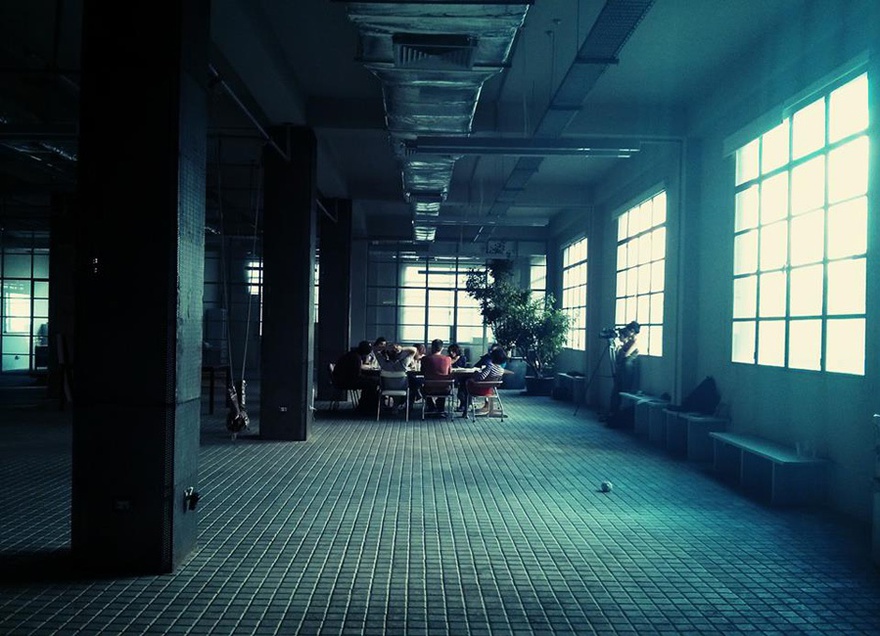News
Encountering the Counterinstitution
Gregory Sholette at Home Workspace Program
I have been a participant/student/artist – in that order – at the Home Workspace Program (HWP) since October 2014. The nine-month platform, which ends in early July 2015, offers an alternative system to degree-granting graduate and postgraduate courses, with a focus on the region of the Middle East and North Africa. Among the 16 current participants, all of whom produced visual-based work for the Open Studios that wrapped up the year, the countries represented were Egypt, Germany, Lebanon, Pakistan/Canada, Palestine, Turkey, Ukraine, UAE/USA, and Yemen, with an age range of between 22 and 33. The framework of this year's programme was Setups, Situations, Institutions. Resident professors who each tackled this framework, in chronological order, were: Khalil Rabah, Walid Raad, Kader Attia, Joana Hadjithomas and Khalil Joreige, Gregory Sholette, and What, How, & for Whom / WHW.
The programme was divided into six workshops, each preceded by a preface delivered by theatre-maker and artist Lina Majdalanie (previously Saneh), who anchored the participants in the locality of Beirut, introducing them to institutions, initiatives and intellectual figures that could be dubbed as figureheads from Lebanon. During the preface, the participants also encountered each other's works for the first time, initiating a dialogue that has continued and hopefully will extend into the future despite the ebbs and flows of any situation of collectivity that brings together different individuals and practices.
All of these numbers, names and places in the preface led to Gregory Sholette's two-week workshop, 'Encountering the Counterinstitution', held from 13 to 24 April 2015, for which Sholette invited two artists from the USA, Josh MacPhee and Rick Lowe, who each gave a lecture and a workshop at Ashkal Alwan. But instead of discussing MacPhee and Lowe's invaluable presentations and discussions with the group, I'd like to focus on the premise of Sholette's workshop and approach to the programme that proved critical in re-situating and challenging the participants' perception of what it means to work within an institution. Sholette was able to form a relationship with the participants within and beyond the institution, working with the participants to clarify their terms of possible collaboration with one another and re-configuring, at least over the course of the two weeks, how education happens, through or despite the institution. Perhaps it is important to note here that the term 'workshop' is used loosely within the context of HWP since a different resident professor interprets each differently. Often, the Resident Professor (RP) brings in cultural practitioners to give a public lecture that is followed by a smaller group 'workshop', in which both participants of the programme and sometimes others from Beirut discuss the content of the lecture in a more intimate environment.
Sholette, who is an artist, writer and educator (he helped establish Social Practice Queens at Queens College Art Department, City University of New York), is an activist, too. He is a member of the Gulf Labor Artist Coalition, which recently occupied Guggenheim in Venice and in New York to demand fair wages and protected rights for the migrant workers building the Guggenheim, Louvre and New York University in Abu Dhabi. This background coalesced in Sholette's presentation of his artistic practice, which he organized in multiple parts at around lunch time for a week, open only to the participants, in which he discussed works in progress as well as older works and experiments in collectivity. The key to these meetings was the establishing of a collegial environment.
This was followed by a full week of lunchtime meetings with the participants of the programme, discussing collectives that Sholette had been involved in such as REPOhistory, Critical Art Ensemble, Political Art Documentation and Distribution (PAD/D) and Urban Encounters at the New Museum, which served to shift the paradigm of working individually as artists. Sholette's discussions around collectivity, especially when in institutional frameworks (be it the municipality, the transportation authority of New York, the museum or the educational institution) served to push the conversations that had been taking place to the next level, posing the critical question of what happens when artistic practices and aesthetics are brought together?
While Sholette did not necessarily answer this question within the framework of the workshop, it was important to sit around the table and discuss not only the possibilities of working together, but also the limitations or obstacles of engaging in collective practice. Issues such as decision-making processes, efficiency, the market-value of artworks and artists, shelf life, transparency, and clear communication, all seem to work together in mysterious ways to threaten the ways in which people work together. Is this a problem that is unique or tangible to emerging artists? How many established artists work collectively? Why is it that MFA programmes offered at higher-level education produce more individual artists than collectives? How many MFA or alternatively educated participants retain their intellectual and personal ties with their colleagues? What is it about the art world as it stands now that the notion of collectivity is both beautifully alluring and ever elusive? To paraphrase Rick Lowe's comment in the last workshop within the framework of discussing the participants' experience at Ashkal Alwan, 'You have to just make sure you do what you need to do.'











